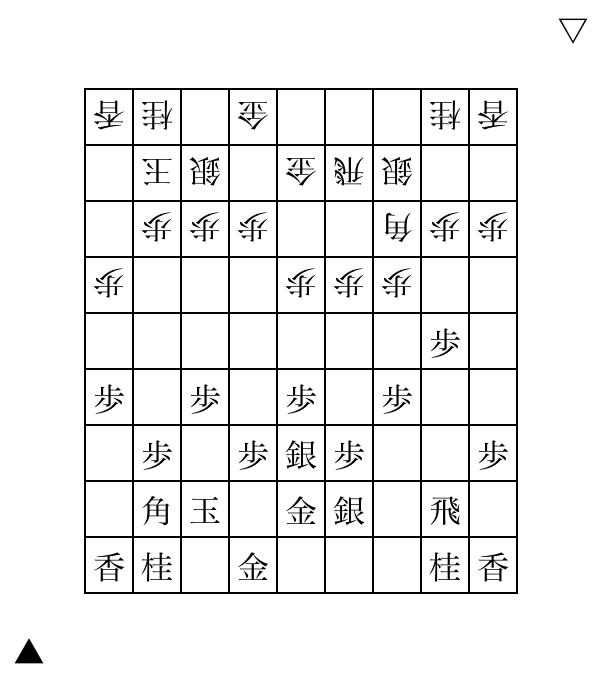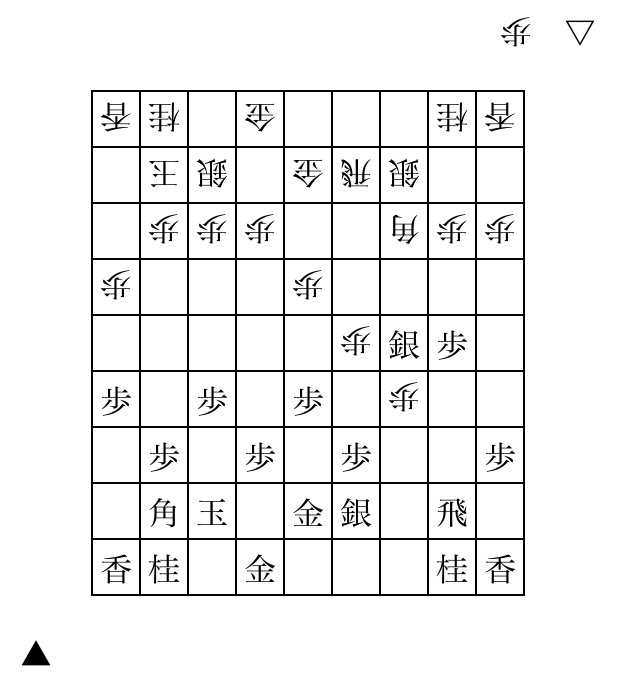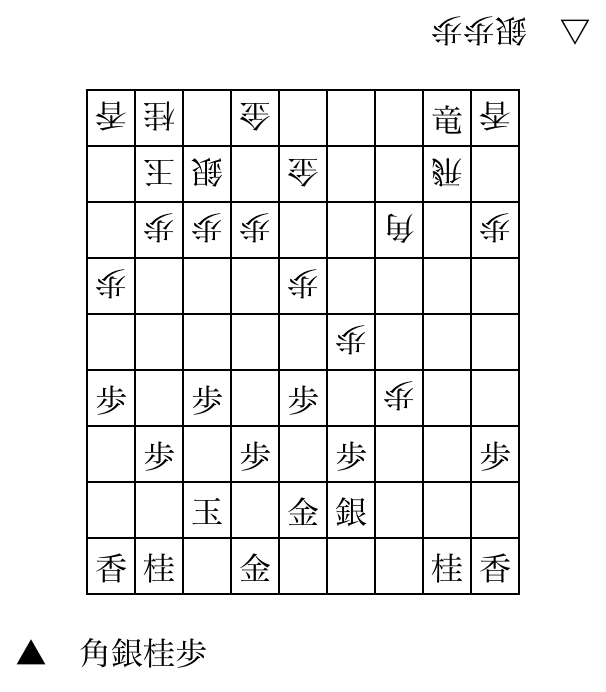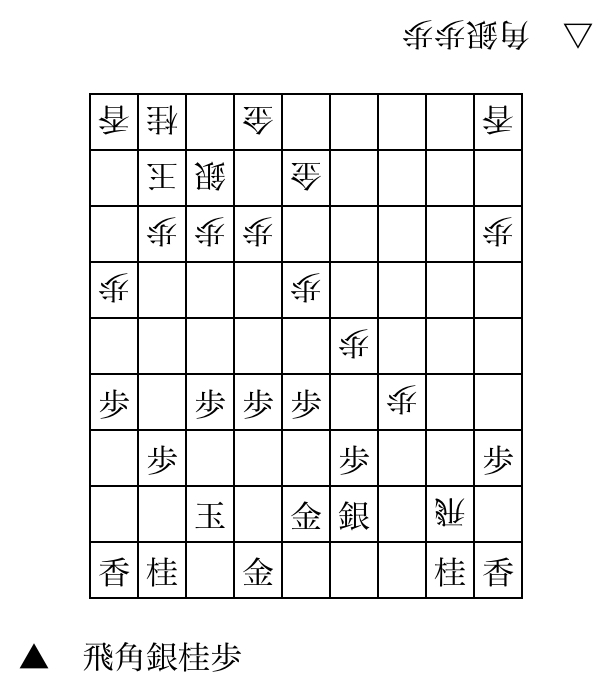4th-file rook is my favorite opening strategy. It is often said that it is good for beginners, because the strategy can flexibly utilized against any type of opposite side’s tactics, and also it contains many essence of techniques. However, the Joseki include a lot of branches of variable, so I am feeling that it is very difficult to remember….
Which is my motivation to wright this article. I would like to classify 4th-file rook Joseki one by one. For the first, let’s start from Yamada Joseki, which is basic conventional opening. It is named after Michiyoshi Yamada who was professional player in 1951~1970. Yamada was static rook player, so the Yamada Joseki is static rook side’s strategy against the 4th-file rook.
Yamada Joseki
Yamada Joseki is a rapid attack game. Static rook side develop the boat castle, and swinging rook side do the mino castle, which is standard castle for all swinging rook strategies. Then static rook moves left side silver forward. Right side picture is basic position in the rapid attack game of statick rook vs 4th-file rook. From this position, static rook open war by pushing ▲P-35.

From the previous position, moves proceed as △Px35, ▲S-46, △P-36, ▲S-35, △P-45, then the situation is like second picture. Black proceeds silver to 5th rank, and white open the bishop line. In the half way of this moving, white side proceeded 3rd file pawn to 6th rank. It is not just to avoid being captured by silver, but also it prevents black side knight jumping to 37.

Moves from the previous position: ▲Bx33, △Sx33, ▲P-24, △Px24, ▲Sx24, △Sx24, ▲Rx24, △B*-33, ▲Rx21+, △R-22.
A lot of pieces are exchanged in the 33 and 22 square. After black captures silver with rook at 21, white drops bishop at 33, which is well prepared counterattack. Black promotes the rook with capturing knight at 21, then white moves rook to 22, which aiming to capture both Dragon and knight.
Instead of moving △R-22, white can promote the bishop to 99 with capturing lance. However, black may drop silver to 88, then white’s horse (promoted bishop) will forced to escape to 98, and it is difficult to utilize it effectively.

Moves from the previous position: ▲+Rx22, △Bx22, ▲B*-66, △Bx66, ▲Px66, △R*-28.
In the previous position, the best move for black is to exchange rooks. Then black need to defense white’s bishop line by dropping bishop at 66. After the all exchanges, white can drop rook inside the black’s territory, which enables taking initiative. This is the end of Yamada Joseki, and it is evaluated that black has advantage. One thing to remind again that white pawn at 36 is preventing the black night’s escaping root to 37.

Check all the process of this Joseki
0Moves


コメント